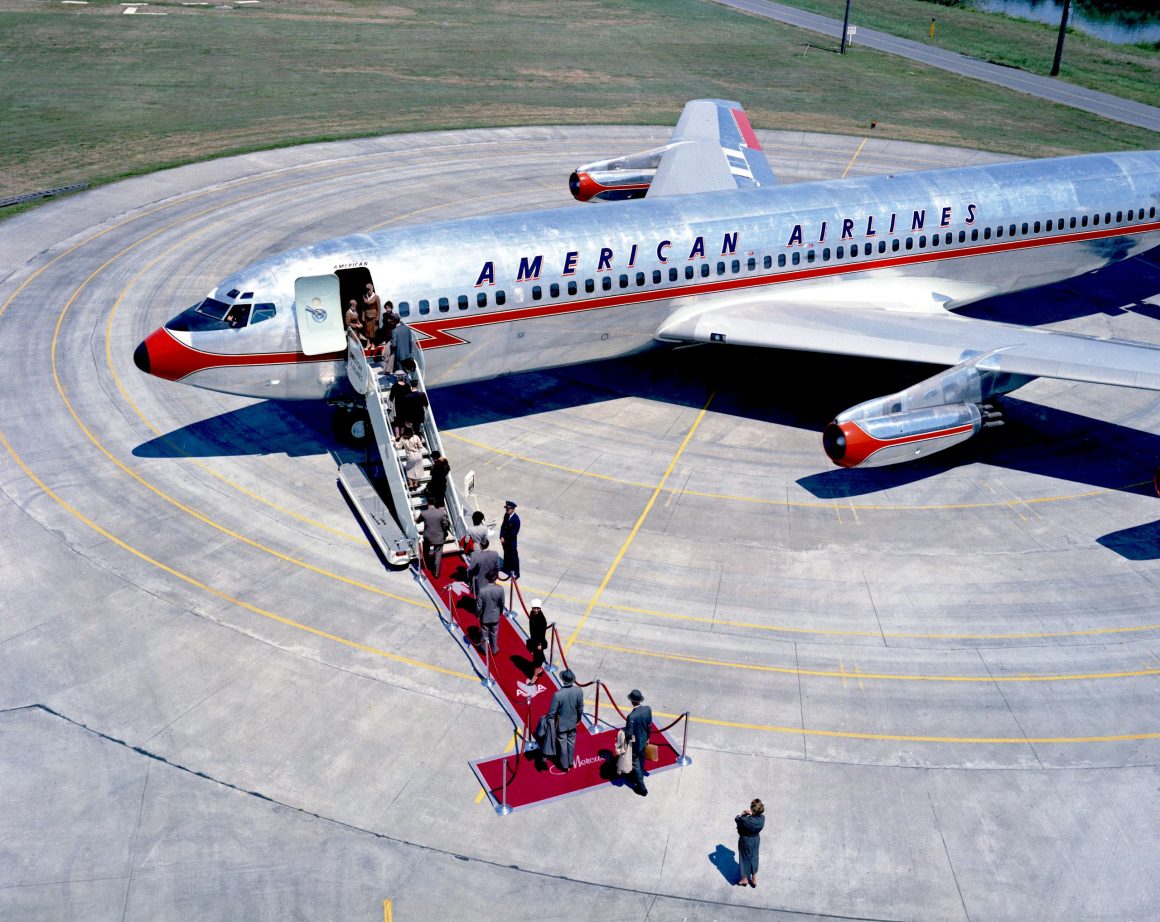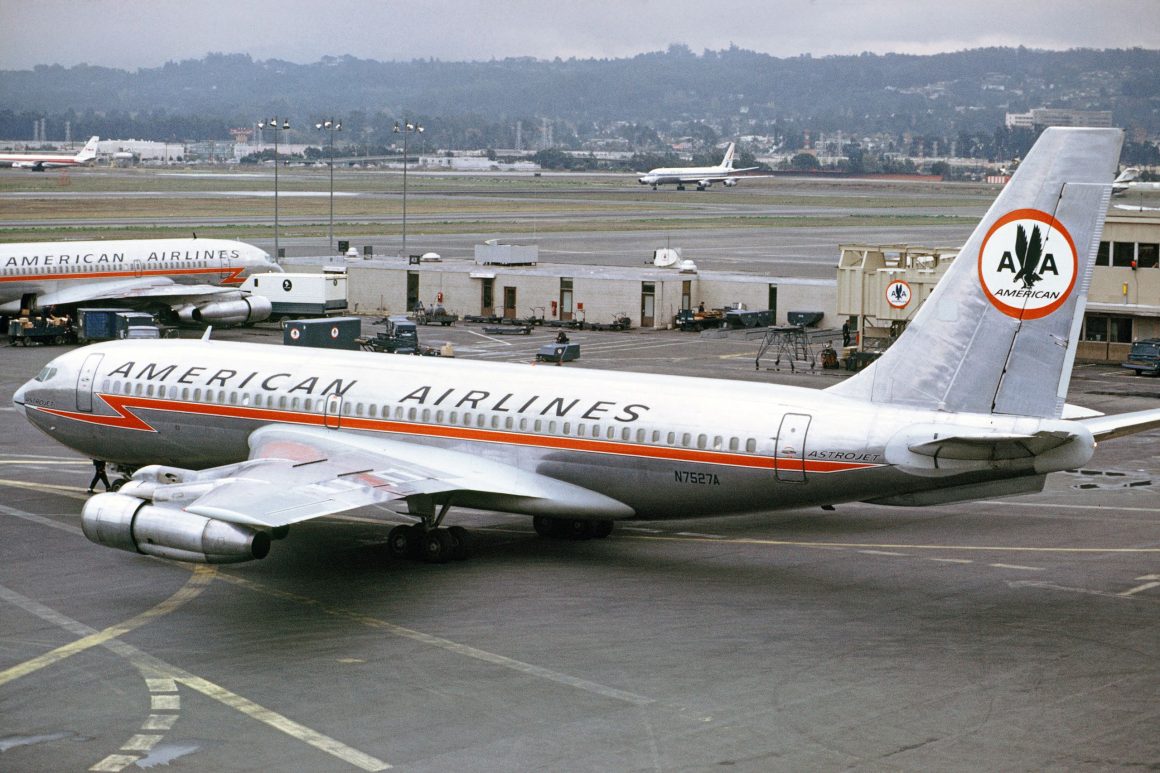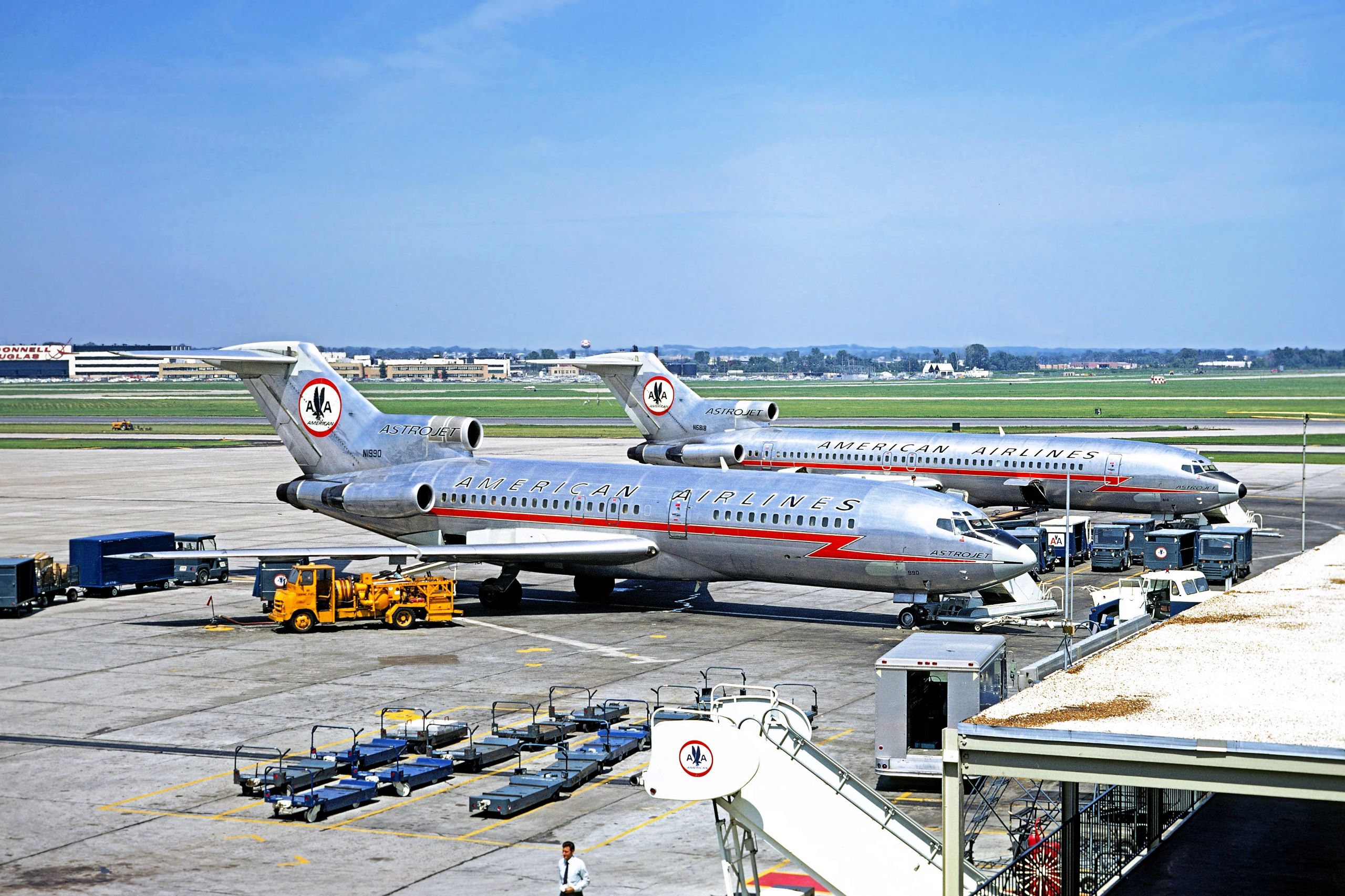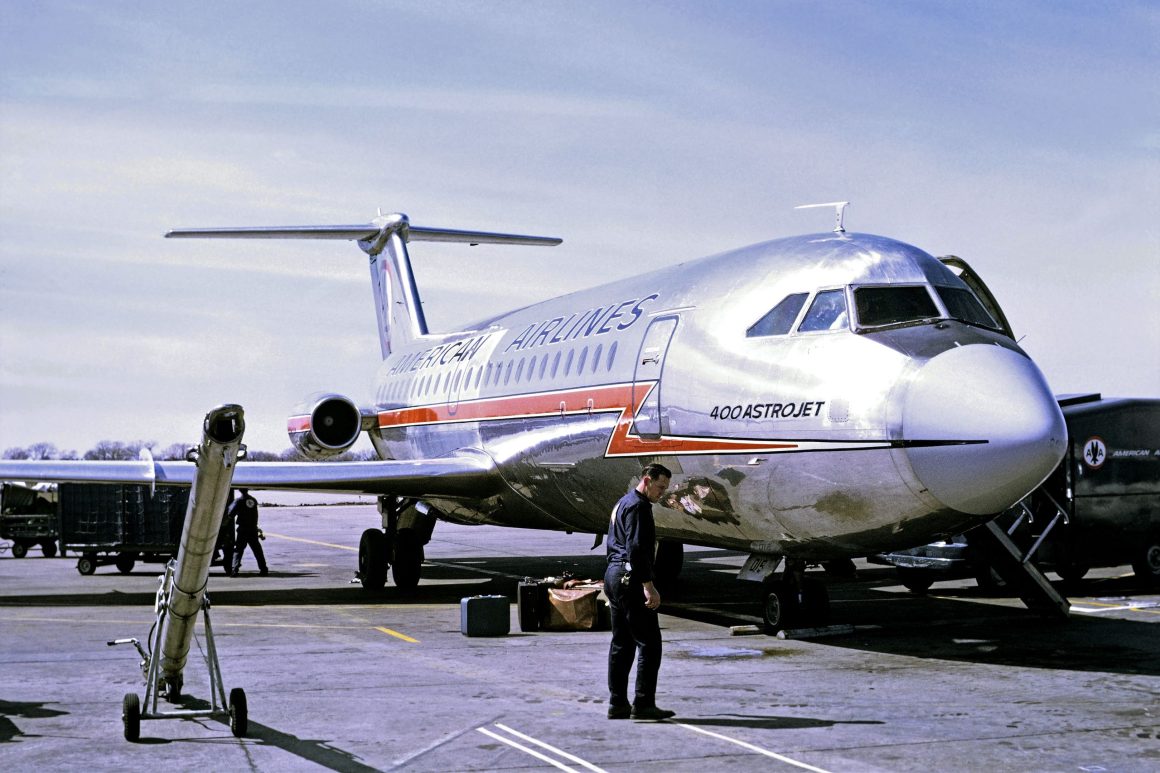“America’s Leading Airline” And Its Aircraft Choices In The Early Jet Era
In the mid-1950s, while most American aircraft manufacturers were concentrating on creating the first generation of jet airliners, Lockheed answered the call to design a 4-engine turboprop type capable of comfortably accommodating at least 65 passengers and cruising at a speed close to 400 mph. CR Smith, the president of American Airlines, ordered 35 of the turboprops, dubbed L-188 Electras, for American Airlines.

The Race To Be First With Jets
Looking beyond the need for turboprops, American’s management team was exploring the pure-jet designs that were on the drawing boards. American had been a loyal Douglas customer since the 1930s, but Douglas’s DC-8 jet design was not going to be available as soon as Boeing’s jetliner would be.
Consequently, CR Smith placed an order for 25 Boeing 707s, intending for American to be the first airline to inaugurate domestic jet service within the USA.

A Back Room Deal Foils The Plan
While Pan American was the launch customer for the Boeing 707, introducing the aircraft on transatlantic routes in October 1958, American Airlines was scheduled to have the honor of being the first carrier to operate its own 707s domestically. Thus, American would be the first US carrier to introduce jets within the USA.
However, a shrewd deal arranged between George Baker of National Airlines and Juan Trippe of Pan Am allowed National to claim the distinction of operating the first domestic jet service in the United States in December 1958, when Baker’s airline leased a 707 from Pan Am for winter service between New York and Miami.

American could still claim to be the first to fly ITS OWN jets over domestic routes in the USA when the company’s Boeing 707s entered service on January 25, 1959.
Electra Tragedy
American’s Lockheed Electra turboprops were slightly behind schedule in delivery, consequently the airline operated its first Electra Flagship flight on January 23, 1959, just two days prior to inaugurating 707 Jet Flagship service.

Less than two weeks after the Electra inaugural, one of the turboprops, the Flagship New York, crashed on approach to New York’s LaGuardia Airport, killing 65 of the 73 persons aboard. It was the first in a series of Electra accidents, experienced by four different airlines, that would initially tarnish the type’s reputation.
However, all Electras underwent a modification process to correct a design flaw – a flaw that played no part in the LaGuardia crash – and Electras went on to serve with many airlines for years to come.

FAN JETS Enter The Fleet
American upgraded its initial batch of Boeing 707s by installing JT3D-1 fan-jet engines on them, and ordered 25 Boeing 720s (10 720s, 15 720Bs), all of which were soon standardized as 720B Fan Jet models.

No Longer The Biggest Airline
In 1961, United Air Lines absorbed Capital Airlines through merger. United became the largest airline in the United States in terms of domestic route mileage, number of passengers carried, and revenue passenger miles flown. No longer could American refer to itself with the slogan it had used since 1950: “America’s Leading Airline”.

American Airlines AstroJets Defined a New Era
In order to revamp American’s rather staid image, the company’s advertising agency came up with a new term to replace the word Flagship. Beginning in 1961, the moniker ‘Astrojet’ was applied to all of the JT3D-1 turbofan-powered jetliners.
The Astrojet name was eventually applied to all new jets entering American’s fleet, and CR smith ordered a lot of new jets, including a batch of Convair 990s from General Dynamics.

The last of American’s piston-engine Convair 240s left the fleet in 1964, the same year that the company introduced Boeing 727 Astrojets to its passengers. It was also the year that CR Smith relinquished the presidency of American Airlines and moved on to chairmanship of the board of directors.

American Airlines Buys A British Bird
One more aircraft type entered the Astrojet fleet during the 1960s. American ordered 15 British Aircraft Corporation BAC 1-11 -400 series aircraft to replace the company’s remaining turboprop Electras and piston-powered DC-6s on short and medium-haul runs. Referred to as BAC-400 Astrojets, the twin-engine British jets entered service with American in 1966.

American ended the 1960s with an all-jet fleet and orders for two new types that would be delivered in the near future: Boeing 747s and Douglas DC-10s.
In the span of a decade, American Airlines had transformed its fleet from all props to an assortment of the most modern jet equipment available. The American Airlines Astrojets became a core part of the airline’s storied history.
